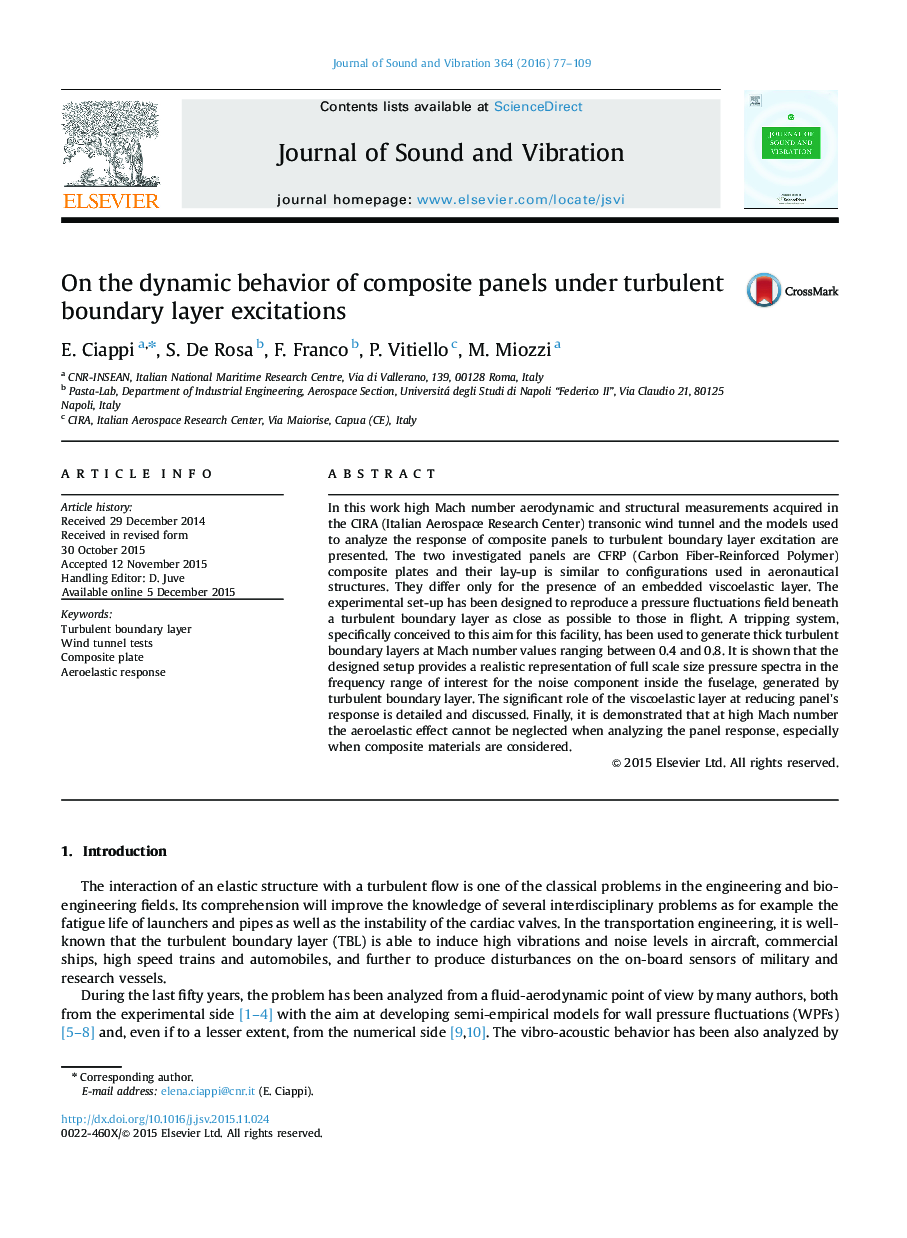| Article ID | Journal | Published Year | Pages | File Type |
|---|---|---|---|---|
| 287120 | Journal of Sound and Vibration | 2016 | 33 Pages |
In this work high Mach number aerodynamic and structural measurements acquired in the CIRA (Italian Aerospace Research Center) transonic wind tunnel and the models used to analyze the response of composite panels to turbulent boundary layer excitation are presented. The two investigated panels are CFRP (Carbon Fiber-Reinforced Polymer) composite plates and their lay-up is similar to configurations used in aeronautical structures. They differ only for the presence of an embedded viscoelastic layer. The experimental set-up has been designed to reproduce a pressure fluctuations field beneath a turbulent boundary layer as close as possible to those in flight. A tripping system, specifically conceived to this aim for this facility, has been used to generate thick turbulent boundary layers at Mach number values ranging between 0.4 and 0.8. It is shown that the designed setup provides a realistic representation of full scale size pressure spectra in the frequency range of interest for the noise component inside the fuselage, generated by turbulent boundary layer. The significant role of the viscoelastic layer at reducing panel׳s response is detailed and discussed. Finally, it is demonstrated that at high Mach number the aeroelastic effect cannot be neglected when analyzing the panel response, especially when composite materials are considered.
